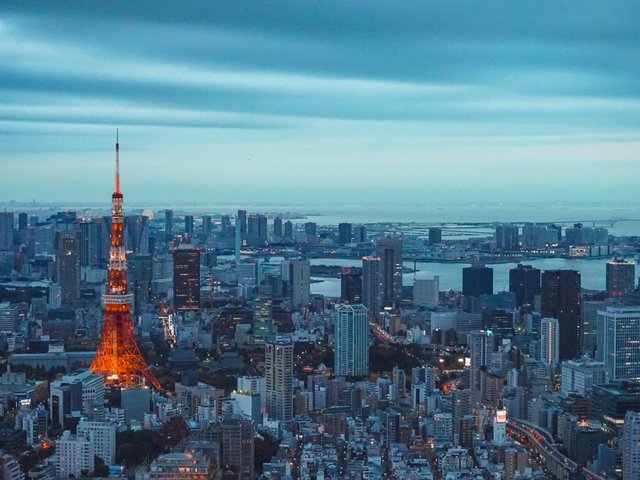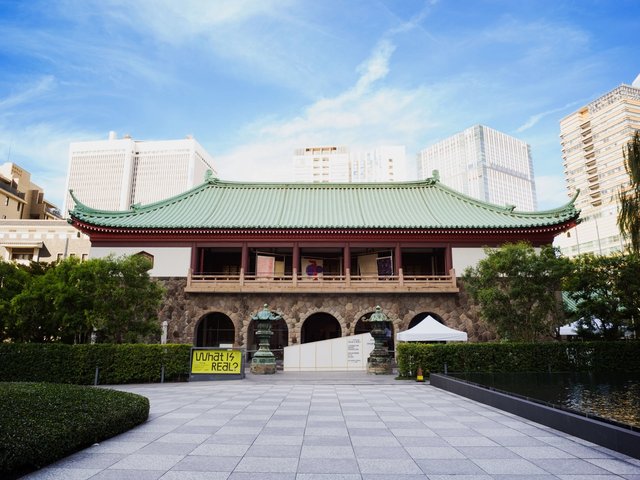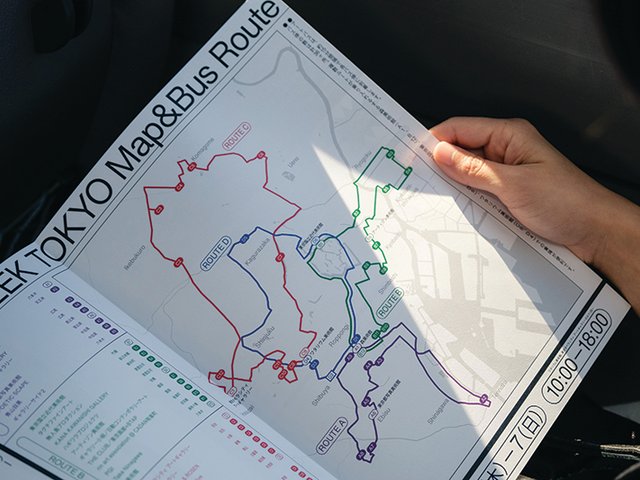Not much about sprawling Tokyo can be called comprehendible, but Art Week Tokyo (AWT, which ran from 7-10 November) compacted the city’s art community into something surprisingly digestible.
For its fourth edition, featuring 53 galleries and institutions overall, AWT sees the regional and global art world take greater notice of Japan's increasingly accessible art ecosystem, and finds that the city's burgeoning local contemporary scene is catching up with its more established market for Western 20th-century art and traditional Asian work.
“Our goal is to be 50:50 for the art world and the Tokyo public,” says the gallerist Atsuko Ninagawa, who co-founded AWT with the collector Kazunari Shirai. After an intensive two-day VIP bus tour, AWT offers six shuttle routes for public audiences.
The event is organised by Japan Contemporary Art Platform in collaboration with Art Basel, and supported by Japan’s Agency for Cultural Affairs, with further involvement from the Tokyo Metropolitan government. Ninagawa, who co-founded Tokyo gallery Take Ninagawa in 2008, adds that online talks also target more general audiences.
This year’s VIP tours on 4 and 5 November expanded to eight buses from last year’s six, and had dedicated buses for significants contingents coming for the first time from Southeast Asia and Taiwan. The event registered about 4,000 VIP passes, of which 80% were from overseas, from an invitation-only list contributed by AWT, Art Basel, and local partners.
Stronger sales
Participants like Tim Blum, whose gallery Blum is holding Yoshitomo Nara’s exhibition I Draw the Line (until 11 January 2025), observed an expanding diversity in the visitors. "This year, there was a curatorial set as well as a collector set. Both groups seemed to include a cross section of individuals, both Western and regional. There was a higher attendance than I had seen in years past, and I expect that number will continue to increase as the event goes forward," he says. The exhibition, Nara’s ninth with the gallery, sold out works priced from $65,000 to $1.1m. "It’s a nice moment to have such a great show during an energetic week in Tokyo," Blum says. "Art Week Tokyo keeps growing year in and year out."
Kana Kawanishi, the director of Kana Kawanishi Art Office, also on the tour, reported sales during AWT of “a few” of Ryoichi Fujisaki's two-dimensional works, priced between $1,000 to $150,000, to American collectors. Another tour gallery, Waitingroom, sold from its show of Yuki Onodera several works at $900 and several more in the range of $4000 to $5000, says its director Tomoko Ashikawa, which is an improvement on previous editions of AWT.
"I felt there were a lot of overseas collectors [this year]," says Takayuki Ishii, the founder and owner of Tokyo’s Taka Ishii Gallery, which joined the free AWT programme but not the VIP bus tours, which galleries pay for. “Last year many collectors visited Japan partly as a vacation, but this year, more collectors came with serious intent to expand their collections.” The gallery this year sold one work during AWT, compared to none during last year’s event. “The number of art professionals who come to this annual event has significantly increased. I believe this is due to the growing interest in the Japanese art market. We expect to see its influence expand internationally.”
Four years in, AWT has solidified its role as one of the top events on Japan’s scattered art calendar. All editions so far have been on the heels of Art Collaboration Kyoto (ACK), which will move to a later spot in 2025 (14-16 November 2025). Of Japan’s other main fairs, the long-running Art Fair Tokyo is held in the spring (7 to 9 March) and the newer Yokohama fair Tokyo Gendai will next year move from July to September 12 to 14.
Ninagawa says that AWT provides a more holistic development than can be cultivated by fairs. “More events create more awareness. We are not an art fair,” she emphasises. “There is an urgent need to educate the market, as we see works going quickly from $1,000 to selling for $500,000 at auction, and there is a need to create a safe space of art for its own sake. There also is a sense for gallerists themselves to curate a space for scholarship. We want to avoid that convention of art and money.”
Japan’s art world is looking to learn from and avoid its prior boom and bust cycle, she continues. “There is no teaching of contemporary art history in Japan, and people are not familiar with it. But if people start collecting without knowing about art, that is a problem. It is a fragile market—the 1990s boom burst to zero. There are fears that that could happen again.” To avoid it, “people must understand the value of art beyond money. Fairs display without that same education, and the market is also not that large—education is crucial here”.
Kawanishi says local collector cultivation is key. “I don't feel any outcomes yet [from AWT], but I hope this event will help cultivate and create more collectors." While local corporations are increasingly trying to integrate art, "there is no such way as an art-thinking business method, and making money with contemporary art is just about taking risks and being crazy, so I am not at all excited or positive about that trend. We simply need more local collectors".
Kawanishi contrasts Tokyo to Seoul, which “is becoming a more impactful Asian city for contemporary art, which, as a neighbor, we are thankful for." The Korean scene contrasts wih Japan in levels of governmental support, but "I am very proud of how interesting and inspiring Japanese artists are. Overall, Japan is an island. We are a bit different from other cultures and continents. Different from Korean artists, who many of them tend to be aesthetically comfortable and please the viewers' eye, I feel Japanese artists tend to dig their thing and go their own way, which result in a unique and interesting expression. I hope AWT continues to evolve and more and more international guests continue to come here and discover (and buy!) our expressions".
Regional focus
This year AWT also broadened its curated, selling AWT Focus section to include three Asian galleries—Korea’s Kukje, Manila's Silverlens, and Taiwan’s TKG+—contributing to this edition’s broader regional pull. While some of the more sprawling, multi-faired regional art seasons now claim entire months, such as Hong Kong’s “Art March” and Shanghai’s November “Artwork Trade Month”, Ninagawa deliberately keeps AWT intensely compact, “because museums have their own programmes”.
Atsuko spoke of the need for Asia to build its own regional scene and circuit, which she says still lags behind Europe’s. A still in-flux Asia schedule has not helped, and this year’s AWT coming a few days later than prior years positioned it against mainland China’s biggest art season, the sprawling art week and massive fairs West Bund Art & Design and Art021 in Shanghai, which Atsuko says was not deliberate. A noticeable mainlander contingent at ACK’s opening was absent from AWT, which had not set its 2025 dates as of the time of publication.
Some participating dealers said they have seen a recent rise in international interest in Japanese contemporary art, with AWT contributing to an overall blossoming of a grassroots art scene in the country. “I think that the history of contemporary art in Japan, which had stopped with the Gutai and Mono-ha schools, has begun to move and more contemporary emerging artists have begun to attract attention,” says Waitingroom’s Tomoko Ashikawa.
Kana Kawanishi observes piqued interest “especially in female Japanese photographers. There actually have always been great talents doing amazing works, but I think the recent tide of featuring more [non-white] female artists” has provided a coincidental boost. “Photography is still a very difficult medium to sell, and that hasn't changed, but we are currently getting inquiries for future museum shows, which is very encouraging.”
"I don’t see Japan’s global profile as being any different compared to the 30 years that I’ve had a gallery," Blum counters. "Obviously, we’ve had a lot of experience seeing an intense interest in Japanese art over these many decades. It appears there’s currently a rediscovery of Japan happening for various reasons including the weaker yen. I don’t imagine that the increased interest will stop anytime soon."
The weak yen casts a shadow all over Japan’s art scene and market. "The currency really has a big impact on us when doing overseas art fairs, so this format of bringing overseas guests here to Tokyo is really what we need and are thankful for," Kawanishi says.
Japan's traditional self-sufficiency also has upsides, says Blum. "It’s been a blessing to have the gallery in Tokyo these many years, but especially in this last year. The gallery in Tokyo isn’t impacted by the American elections or other things that are external to Japan."
Any current vogue mostly benefits, “a very limited number of big name artists," says Saya Lee, owner of Leesaya Gallery. “I believe this is due in part to the inflated prices in the market caused by doing business with mega-galleries in the US and Europe. However, I do not see any economic benefit from them in the local scene. Wealth is concentrated, and it is hard to say that companies and governments are actively supporting young artists or promoting cultural support for small and medium-sized enterprises."
Lee adds that, like much of the world, "environment, gender, digital, and immigration issues are hot topics in the Japanese art scene. It is crucial to cover those." But Japan also has unique "topics around history, religion, and customs, which must be dealt with and which cannot be discussed only from a West-centred view of art history. At the same time, there is a general mood in Japan that makes it very difficult to propose or advocate anything. It could be described as a kind of self-restraint or self-censorship. In such air, how can we present and sell critical works in a kind of clever manner? That is our major challenge."






